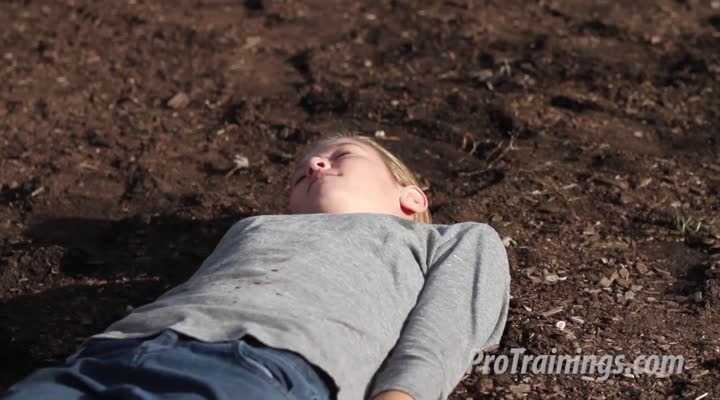ProFirstAid At a Glance
- Find out what's changed since the last major American Heart Association update.
- Address the reasons people are afraid to get involved in an emergency.
- Learn how to perform adult and child CPR in a workplace setting.
- Identify signs and symptoms and learn how to treat medical emergencies.
- Learn skills such as CPR, AED, choking skills, epinephrine administration, first aid, & more!
- Learn how to prevent emergencies from happening around the home.
- Practice along with your instructor and test your retention as the scenario plays out in real-time.
In this introductory section of your professional first aid course, we’ll be breaking down some things you can expect to learn in the course including: medical emergencies, CPR techniques, bleeding control, sudden illness, and treatment for other medical emergencies you may encounter. We’ll also provide you with the most recent update guidelines, the five fears of CPR rescue, and how you can access EMS through technology.
In this section of your professional first aid course, you’ll be learning about two of the most common medical emergencies you’ll encounter: heart attacks and stroke. When it comes to heart attacks, you’ll learn what they are and why they happen, if there’s anything we can do to help control or prevent them, and the signs and symptoms of a heart attack for both men and women. In the stroke lesson, you’ll learn what a stroke is, what the signs and symptoms are that will indicate to you that there’s an emergency, and what to do if you suspect a stroke.
In this section of your professional first aid course, we’ll be digging deeper into universal precautions in the workplace and handwashing techniques. The first lesson will focus on situations in which an injury or illness in the workplace leads to the presence of blood or other potentially infectious materials in the environment and what you should do. And although the second lesson in this section may seem elementary, handwashing is maybe the single best way to help prevent the spread of infection, as long as you do it properly.
In this cardiac section of your professional first aid course, you’ll learn how to perform CPR on adults, children, and infants or babies. You’ll also learn how to use an AED on adults, children, and infants. You’ll also find lessons on agonal breathing, which isn’t normal breathing, even though it may appear to be. You’ll learn how to properly do hands-only CPR. And you’ll find one special lesson on why, or how often, CPR doesn’t work, and what you should do to prepare yourself for that possibility.
In this section of your professional first aid course, you’ll learn how to treat victims of choking, specifically adults, children, and infants who are either conscious or unconscious, as the techniques are different for each age group and each circumstance. You’ll learn the best way to do the Heimlich maneuver for each age group, including where to place your hands and how to properly do the thrusts, along with the special variation for performing the Heimlich maneuver on pregnant women.
In this section of your professional first aid course, you’ll be learning about the three types of bleeding emergencies you may encounter: arterial, venous, and capillary. You’ll learn the characteristics of each for quick diagnoses and how to treat each emergency most effectively. Also included in this section are lessons on amputation emergencies, how to diagnose and treat for shock, how and when to apply a tourniquet, hemostatic agents to control bleeding, and animal and human bites that could result in a bleeding emergency.
In this section of your professional first aid course, you’ll learn how to diagnose and treat specific injuries like concussion, burns, eye injuries, injuries to the musculoskeletal system, and injuries to the head, neck, and back. In the first two lessons (Mechanism of Injury and Secondary Survey), you’ll learn the mechanics for identifying specific injuries, as time wasted is time that could have been better spent and should be avoided whenever possible.
In this section of your professional first aid course, you’ll learn about several sudden illness emergencies: fainting, diabetes, seizure, snake bites, allergic reactions, and asthma. You’ll learn about identifying and treating for each, along with two lessons on how to use an epi pen for certain emergencies and the recovery position – what it’s for, when to use it, and how to use it.
In this section of your professional first aid course, we’ll be teaching you about two specific types of emergencies: those that are heat-related and those related to cold. In the lesson on Heat-Related Emergencies, you’ll learn how the body’s internal temperature system works and how to identify and treat someone with heat exhaustion or heat stroke. In the lesson on Cold-Related Emergencies, you’ll learn how to identify and treat for a cold emergency, also known as hypothermia.
In this section of your professional first aid course, you’ll learn how to prevent certain types of emergencies from happening, such as poisonings, backing up a car with others around, pool safety, childproofing a home, and child abuse and neglect. The tips outlined in this section will help prevent some emergencies from occurring. But you’ll also learn valuable treatment techniques if you do encounter an emergency in one of these areas.
In this last section of your professional first aid course, you’ll learn about special considerations when performing CPR, using an AED, or dealing with a victim who is choking. Specific areas of concern will be addressed, such as the size of the victim, the crunching sound and feeling when performing chest compressions, and how to deal with impaled objects in the chest. And finally, the last lesson is simply a Conclusion to your professional first aid course.












































































